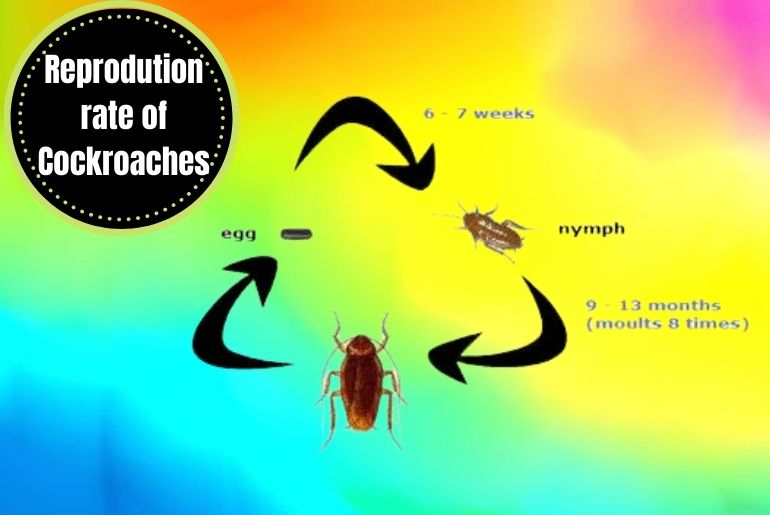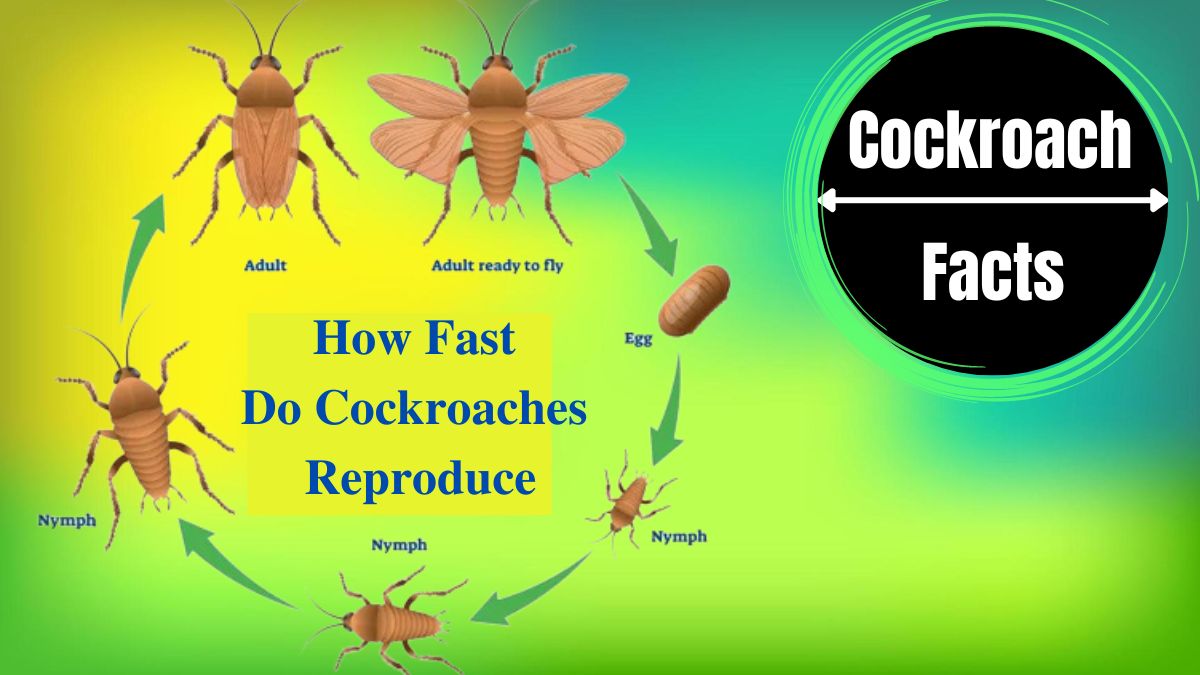Cockroaches reproduce quickly, and their reproduction rate depends on species, temperature, and environmental conditions. A female cockroach can lay multiple egg cases, with each containing 10-50 eggs. Some species, such as the German cockroach, can produce up to six generations per year, with each female laying around 30-40 eggs per case. The eggs hatch within a few days to several weeks, and the nymphs mature quickly, usually reaching adulthood within a few months.
German Cockroaches

German cockroaches are known for their fast reproductive rates. Females can produce up to six generations per year, each laying around 30-40 eggs per case. Depending on temperature and humidity levels, the eggs hatch within a few days to several weeks. Nymphs undergo several molts before adulthood, usually taking a few months. Under favorable conditions, a single female German cockroach can produce thousands of offspring a year, making them a significant pest problem in homes and businesses.
American Cockroaches
American cockroaches have a slower reproductive rate compared to other species of cockroaches. Females typically produce one egg case per week, each containing around 15 eggs. The eggs take about two months to hatch, and the nymphs undergo several molts before adulthood, which usually takes around six months. Under optimal conditions, a female American cockroach can produce up to 150 offspring per year.
Oriental Cockroaches
Oriental cockroaches have a moderate reproductive rate compared to other species of cockroaches. Females typically produce one to two egg cases per week, each containing around 16 eggs. The eggs take around two months to hatch, and the nymphs undergo several molts before adulthood, which usually takes around six months. A female Oriental cockroach can produce up to 200 offspring in her lifetime.
Brown-banded Cockroaches
Brown-banded cockroaches have a relatively slow reproductive rate compared to other cockroaches. Females typically produce up to 18 egg cases throughout their lifespan, each containing around 18 eggs. The eggs take around 50 days to hatch, and the nymphs undergo several molts before adulthood, which usually takes around six months. A female Brown-banded cockroach can produce up to 600 offspring in her lifetime.
Madagascar hissing Cockroaches
Compared to other species of cockroaches, Madagascar hissing cockroaches reproduce relatively slowly. Females can produce up to 60 offspring in their lifetime, with each pregnancy producing around 20-30 nymphs. The nymphs take about 3-6 months to reach adulthood, depending on the temperature and humidity levels. The females usually mate once but can store sperm for several months and produce multiple broods without mating again.
Smoky brown Cockroaches
The reproduction rate of smoky brown cockroaches is relatively high. Female smoky brown cockroaches can produce up to 40 egg cases in their lifetime, each containing around 20-25 eggs. The female cockroaches typically deposit the egg cases in hidden areas such as cracks, crevices, and other secluded places. The nymphs hatch from the eggs within a few weeks and go through several molts before adulthood, which takes about 4-6 months. Smoky brown cockroaches are capable of reproducing throughout the year.
Factors affecting the reproduction rate of cockroaches
The reproduction rate of cockroaches can be influenced by a variety of factors, including:
Temperature and humidity
Cockroaches are cold-blooded creatures, which means the surrounding environment regulates their body temperature. High temperatures and humidity can accelerate their metabolism and reproductive processes, leading to faster growth and increased fertility.
Nutrition
Adequate nutrition is essential for the development and reproduction of cockroaches. A lack of food or a poor-quality diet can negatively impact their growth and reproductive potential.
Mating behavior
The frequency of mating and the number of partners can affect the reproductive rate of cockroaches. Females that mate with multiple partners may produce more offspring and have a higher fertility rate.
Age and health
As with most living organisms, cockroaches’ age and overall health can impact their reproductive potential. Younger and healthier individuals may produce more offspring and have a higher fertility rate than older or less healthy individuals.
Environmental conditions
Cockroaches require suitable habitats to breed and lay eggs. Environmental factors such as light, humidity, and moisture can affect their ability to find suitable breeding sites and reproduce.
Optimal Condition for Cockroach Reproduction
Cockroaches are adaptable creatures and can reproduce under a wide range of environmental conditions, but they have certain preferences for their ideal breeding conditions. The optimal conditions for cockroach reproduction are:
Temperature
Cockroaches prefer warm temperatures between 80-90°F (27-32°C) for optimal reproduction. High temperatures accelerate their metabolism, leading to faster growth and increased fertility.
Humidity
They require a high level of humidity to survive and reproduce. They prefer environments with 75-90% relative humidity, which helps prevent dehydration and allows them to thrive.
Food and water
These insects require a consistent source of food and water to breed successfully. They prefer dark, damp areas such as kitchens and bathrooms where they can find both.
Shelter
Cockroaches prefer to breed in the dark, enclosed spaces where they feel safe and secure. They seek out cracks, crevices, and wall voids to lay their eggs and rear their young.
Absence of predators and competition
Roaches are more likely to reproduce in environments with little competition or predation. If other insects or animals are present, they may struggle to breed successfully.
How to reduce cockroach reproduction in homes?
Eliminate food and water sources
Cockroaches require a consistent source of food and water to reproduce. Be sure to clean up spills and crumbs promptly, store food in airtight containers, and fix leaky pipes and faucets.
Seal entry points
They can enter the home through tiny cracks and crevices. Seal gaps around windows, doors, and pipes, and use weather stripping to keep them out.
Keep your home clean and clutter-free
Roaches thrive in cluttered, messy environments. Regularly clean your home, declutter, and dispose of any unused items that may provide hiding places for cockroaches.
Use baits and traps
Baits and traps can help reduce cockroach populations by attracting and killing them. Place them in areas where cockroaches are likely to hide, such as under sinks and cabinets.
Use insecticides
Insecticides can be effective at killing cockroaches but should be used with caution. Be sure to follow the instructions carefully and keep them out of reach of children and pets.

